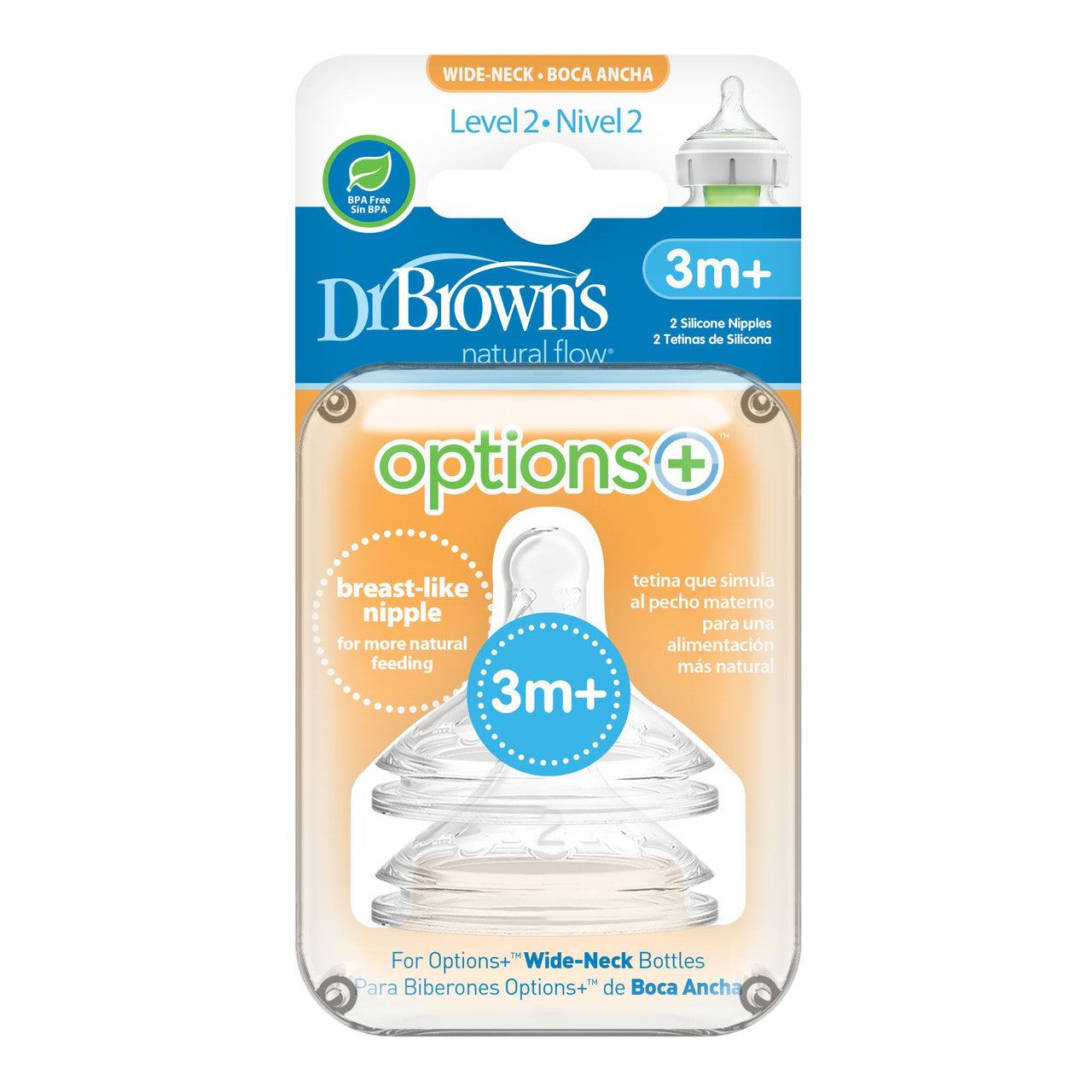Making the transition from the breast or bottle to a training cup is another one of those signs that your baby is not such a baby anymore. While you’re wondering how your little one grew so fast, you may also be wondering how to make this important transition happen as smoothly as possible. Some babies make the transition quite easily, and some will make you crazy wondering if they’ll ever get there!
Which Cup is Right for You?
You’ve surely noticed by now that many baby products are staged by the baby’s age. While there is no specific “order” for you to follow with cups, you’ll find that most are designed to reflect a baby’s approximate age or development stage. That said, some children prefer a straw cup to a sippy cup, and there should be no issue if your child is ready. You may want to do a little experimentation.
The details on all Dr. Brown’s training cups can be found on our website, but here is a quick reference guide:
- 2-in-1 Transition Bottle Kit – This kit easily converts from Options® bottle to a sippy spout. It simply replaces the vent and bottle teat with the super soft sippy spout.
- Baby’s First Straw Cup (6+ months) – Helps your child transition from bottle to cup and allows for spill-proof drinking at any angles
- Soft Spout Transition Cup (6+ months) – Contoured handles and a one-piece, spill-proof spout make this a great first cup for your baby.
- Soft Spout Toddler Cup (9+ months) – A contoured design to help your toddler hold the cup like a grownup.
- Hard-Spout Insulated Cup (12+ months) – Helps your child develop their sipping skills, including a spill-proof hard spout that prevents messy cleanups.
Proper Cup Assembly and Cleaning
As is the case with so many baby products, proper cleaning and drying is key – especially with training cups. Here are a few simple tips to help you keep your cups sparkling clean:
- Don’t let your cups sit for too long after use – wash them as soon as possible.
- Completely disassemble all parts before cleaning.
- Allow the parts to dry completely and wait to re-assemble the cup until the parts are dry.
Your cup parts can be washed in hot, soapy water. The Dr. Brown’s bottle brush works well for this. You can also put all the parts in the dishwasher, just be sure to use the top rack only. It’s best to avoid boiling or microwave steam sterilising your cup parts to ensure everything seals correctly. Once you’ve got it down, cleaning and assembly will be quick and easy!
What if my baby won’t take a sippy cup?
In your never-ending quest to minimise stress, here are a few other tips that should help make your cup transition easier.
- Eliminate distractions: Avoid beginning the transition when you have other big life events happening, such as a move. The more comfortable and familiar everything is to your baby, the better your chances.
- Try a soft spout: A soft spout cup will feel more familiar than hard plastic. While some babies jump right to hard plastic, some need a soft spout first. Lend a Helping
- Hand: Touching the spout to the roof of your baby’s mouth will stimulate the suck reflex, which shows him the spout is like a nipple.
- Substitute if needed: Try putting just a bottle nipple in baby’s mouth to initiate sucking, and then switch to the sippy cup spout.
- Get the timing right: Early on, avoid switching from bottle to cup during early morning and later-day feedings when babies tend to be fussier. Use mid-day feedings and then gradually switch over to all meal times.
- Switch up the liquid: If you’re getting any resistance, experiment with milk or water. As your baby gets more used to the cup, she’ll get more content with whatever you put in it.
- Don’t give up too fast: If baby doesn’t take to a cup right away give it a few weeks and try again. Most babies make the transition successfully.





















